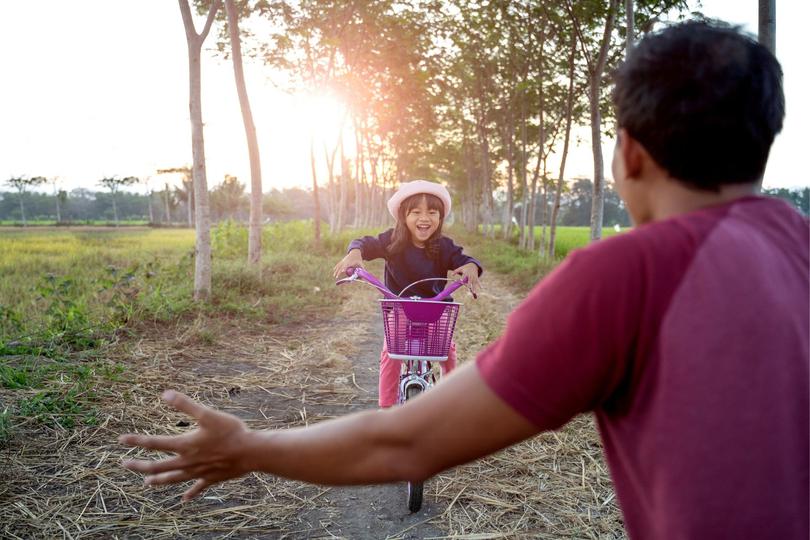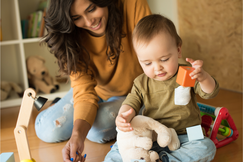Development steps: From the first gurgle to the first heartache
Your child goes through these stages of development from infant to adolescent
You may have heard of "basic trust" or that "attachment to the mother or another close caregiver" is so important for your child in the early years. But what is meant by this and what happens afterwards? We have summarized for you here which developmental steps children go through until they are teenagers according to the step model of the psychoanalyst Erik Erikson.

From 0 to 1 year - "I am what I am given!"
In the first few months, infants are completely dependent on their close caregivers such as mother, father or grandparents. They need food, protection, care, closeness and want to communicate with them. Erikson says that in this first year of life, the so-called "basic trust" develops between the child and the caregiver. This means that it trusts that it will be as safe in the world as it is with this person. Under difficult conditions, however, a "primal mistrust" can also develop. This means that the child views his or her environment with scepticism, because as an infant he or she may have learned that he or she cannot rely on close caregivers.
From 1 year to 3 years - "I am what I want."
In the second phase, children learn that they can not only get what they want and need by screaming, but that they can also demand things in a different way. They learn to walk and discover that they have a will of their own. This leads to the conviction that they can become effective and successful even with the wishes they have. If the child learns again and again that his own wishes and needs are judged as "wrong", shame and doubt about these needs arises.
From 3 years to 6 years - "I am what I imagine I will become"
The phase between 3 and 6 years is characterised by the child learning the change between initiative - i.e. "I am doing something" - and guilt - "I am ashamed of something". The close relationship between the most important caregiver and the child opens up and the child develops an idea of morality and its own conscience. Generally known are, for example, the defiance phase and the why phase, which become apparent during this time. If the child is restricted too much in his drives, such as the play instinct or the discovery instinct, he can develop fear and feelings of guilt. Instead of the courage to take the initiative, distrust, shame and passivity can become entrenched as basic convictions.
From 6 years to puberty - "I am what I learn!"
In this phase, children want to become part of the adult world and shape it themselves. With school enrolment, they begin to learn how to learn and want to receive recognition for achievements. Here, however, they also meet people they cannot avoid and thus, according to Erikson, develop their first "feelings of inferiority". At the same time, they also learn to work towards more distant goals, such as an exam.
What happens in adolescence - "I am what I am."
With puberty the search for one's own identity and a new hold outside the family begins. For example in a group of friends and/or a relationship. Many questions arise, for example about one's own career. Many doubts also arise here. Not only your own body changes, but also the world around you is subjected to a critical look. Parents and children often clash, because the search for one's own identity often contradicts the ideas of one's own parents. Both sides need a lot of patience and tolerance here.
Published on
Topics
Articles on the topic
-
How do I find a school place for my child?
Depending on the state and type of school, different things need to be...

-
Childcare - how does it work in Germany?
The path from application to daycare place is simple and complicated at...

-
You don't have to be a read-aloud king or queen, but..
Reading adventures with your child are not to be missed!

-
Corona - and then what?
How you can support your teenager with fear of the future

-
Good night, clichés!
"modern" books for children and young people

-
From infant to toddler
Short years full of milestones
